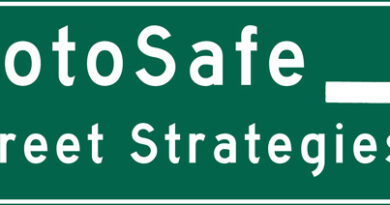The root cause of motorcycle crashes
…and close calls, as well. In fact, the researchers’ term of art is Near Crash. Philosophically and morally, near-crashes are as bad as crashes, although from a practical standpoint, riders would much prefer a close brush with disaster to a crash under most any circumstance. After all, the same failures that lead to crashes also lead to near crashes, and luck probably plays a part in changing a crash into; “Whew! That was close!” We’ve all heard someone say they would rather be lucky than good, but Lady Luck’s razor cuts both ways, and I suspect that riders would much prefer that luck play no part in having fun and reducing risk while riding. What do you think about the subject?
In any event, wouldn’t it be nice if we could discover the root cause of motorcycle crashes and near-crashes, and address that root cause in our day-to-day riding activities? So, what IS the root cause? Well, let’s go exploring.
Those who study such matters tell us that the primary or single cause of a particular crash is normally difficult to determine; usually, there are multiple risk factors that converge, accumulate, and interact with one another in unpredictable ways that produce either the crash we all try to avoid, or the pucker-moment of a near-crash. Take a peek at this scenario.
Clarence and Ty were enjoying a mid-morning ride through some winding mountain roads. The weather was clear, comfortable and dry, and the pavement was in good condition; since it had been recently repaved, there were barely visible temporary centerline markings. Clarence and Ty were riding in a staggered formation, with Clarence in the left-hand portion of the two-lane road, close to the centerline, and Ty’s position was about 50 feet back in the center portion of the lane. They were riding just a tad above the posted speed limit. This section featured a tall cliff on the left verge of the road, and a gently descending hillside just past the roadside ditch on the right verge.
Clarence was riding a nearly new motorcycle which was professionally serviced only two days previously, while Ty’s machine was not only well-used, but sported a worn rear tire.
As the duo approached a left-hand curve, a compact car appeared suddenly around the blind curve, about two feet over the centerline and drifting even further into the oncoming lane. Ty was interested in viewing the scenery off to the right, and failed to notice that he was creeping up on Clarence’s bike as Clarence rolled off the throttle prior the curve. Clarence, however, was looking toward the curve as the car appeared, and realized that a crash was imminent; he caught a glimpse of Ty’s bike in his right mirror, very close, and knew that he would likely collide with Ty if he moved to the right, but had no other escape route. By this time, the collision had occurred, with Clarence’s machine striking the middle of the auto’s grill head-on, while Ty managed to lock the rear brake on his motorcycle and low-side into the soft ditch at a low speed without colliding with any object.
Clarence was thrown violently into the ditch on the right, and suffered a compound fracture of his left leg, a broken arm and multiple contusions; he was conscious when citizen first-responders arrived. Ty was dazed; his helmet came off during his low-side crash and he had scratches on the side of his head, as well as road-rash on the uncovered parts of his arms. Neither rider had been drinking, and both were well-rested. Both riders had temporary motorcycle permits that had been renewed multiple times. The driver of the compact car suffered a broken arm, and said that the power steering on her aged car had failed last week, and it was “hard to steer.”
What was the cause of this crash? The defective auto? Was there more than once cause-factor that contributed to the crash? Did too many factors accumulate, so many that Ty and Clarence were overwhelmed and had no responses left? How many risk factors were present, and how did they interact with one another to produce this horrific event? What errors, if any, did Ty and Clarence make? What do you think Clarence or Ty would say caused their crash? What could have prevented this crash? As an aside, The Lovely Norma and I were some of the initial citizen first-responders at this crash scene.
You may have a different count, but I find about six risk factors in this sad tale, maybe more. Some risk factors are moving, some are stationary, some appear in the moment, and some risk factors begin sometime in the past. Some are under the control of the rider, while you may have no actual control over others. However, all the factors arrived at the scene of this crash together. But have we discovered the real root cause of crashes within this story? What do you think the real root cause, the ‘silver bullet’ might be?
Certainly, if Clarence and Ty had advance knowledge that an auto with defective steering would appear suddenly in their lane around a blind turn, they both would have taken action to reduce the risk and eliminate the likelihood of this crash happening, right? Unfortunately, the driver of the compact car neglected to first ring up Clarence and let him know that she was coming towards him in a car that maneuvered badly;”Watch out, fellas! I’m headed your way, and this thing steers like a pig!”
Risk-management folks tell us that there are few true ‘accidents;’ rather, events like this, ‘crashes,’ are predictable. If you or me can predict a crash, we then have the means to prevent it, despite the absence of prior detailed certain knowledge that broken auto would soon be in our lane. Were there visible clues to this risky situation present, clues that could have given Clarence and Ty some specific advance warning of a possible threat? Sure! See how many of them you can identify.
Let’s then consider the root cause of motorcycle crashes and close calls. Perhaps it is: A lack of awareness of nearby converging, accumulating and interacting risk-factors and clues.
We can defend ourselves by actively searching and scanning the situation for the visible clues that indicate hidden risks as well as spotting clearly visible risk factors, and actively and consciously thinking about, and creatively predicting how the visible risk-factors, as well as the clues that point to the crash-traps in hiding might come together at the wrong time and the wrong place and produce a dreaded crash, or an embarrassing near-crash. Then, of course, we take some actions early that mitigate or eliminate the risk in the potential crash-chain.
Many riders learned the strategy of Search, Evaluate, Execute from rider education classes and literature. Pretty easy to do, right? Well, yes, actually, it is a relatively easy task to perform, given these conditions:
- The rider has undergone education of some type; the rider is informed
- The rider has competent maneuvering skills, and maintains these regularly
- The rider uses past experience to expand his or her personal knowledge base
- The rider is actively and consciously involved, mentally, in the riding-task
The last bullet-point is the lynchpin of the entire process, isn’t it: Keeping our brain/mind ‘on-task’ while riding. Our minds have a voracious appetite for engagement and content. It’s likely that few, if any, humans are actually able to ‘think of nothing’ while awake and conscious. Try it; see if you can think of ‘nothing.’ Go ahead; we’ll take a few minutes off…
How did you do? Likely, you were actively involved in thinking; ‘nothing…nothing…nothing,’ weren’t you. And that’s thinking about something – it’s not nothing. So, without some conscious mental oversight of what you, the rider, are currently taking on as a current thinking task, our content-hungry minds can become subject to daydreaming, searching for an interesting, engaging thinking task. Let’s define ‘daydreaming’ as any thinking task that does not involve the business of actively searching and scanning, and evaluating all sensory input for possible threats and risk. We can become blissfully unaware of the threats posed by these multiple risk-factors that are continually milling around us, accumulating, forming up, dissipating, appearing and disappearing, changing, getting closer to us, dissolving, and so forth; the endless ribbon of road-risk as it presents itself to us.
This business of active mental self-oversight is possibly the second-highest order of mind/brain activity after self-awareness; is an active process of CHOOSING what to think about, how long to continue on that thinking task, what task should be next, and what mental task is the most the important in one’s life at that moment. Or, what SHOULD be the most important.
Do you know how you or I can improve our attentiveness? If so, write Street Strategies with your thoughts. Clearly, as a well-known Hurt Study Finding states, “Lack of attention to the riding task is a common factor for the motorcyclist in a crash,” and that makes you and me, riders, one of the constant potential risk factors. If it is indeed true, the root cause of motorcycle crashes is: “A lack of awareness of converging, accumulating and interacting risk-factors and clues,” consider how you might address this issue within yourself. Street Strategies very much would like to hear from you on the subject!
Ride fun, ride often, ride safe… Think!
Originally published in BMW Owners News in November 2017.




